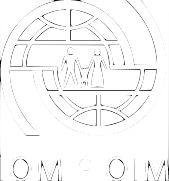IBM and IOM prototype game-changing mobile app to help domestic workers.
“Oh, this could be useful!”, says Champa (34) a migrant domestic worker from Myanmar while looking at the phone she is holding. “This can help domestic workers communicate more easily with their employers – and this is so important to prevent tension in the first place”. She briefly looks up and smiles; a brief moment that is broadcast live via video feed into a room only 20 meters from where she is sitting. Champa knows that her reactions are observed by a panel. A total of 14 experts from the International Organization for Migration, IBM and HomeNet, a domestic worker network based in Thailand, are watching her every move. They are there to understand how testers reacts to the mobile app’s prototype they had developed together. 1700 km to the east, Tatik Samidi another migrant domestic worker in Hong Kong investigates another feature. “Take a photo of my important documents?”, she says. “Are we going somewhere?” – the room erupts with laughter. This feature won’t make it into the final app.
The initiative is part of a collaboration between the International Organization for Migration’s IOM X programme, a media campaign and innovations programme to help prevent exploitation and human trafficking, and IBM’s Corporate Service Corps (CSC) programme. The latter deploys IBM staff from different countries to volunteer with government and non-governmental organizations in order to solve critical problems while providing IBM employees with unique leadership development opportunities. This time, they were sent to help IOM X answer the following question: Can IOM develop a mobile app that is useful, widely used and most importantly helps prevent the exploitation of domestic workers in ASEAN?
Champa moved to Thailand more than 23 years ago. She is one of over 53 million domestic workers worldwide who are employed in other’s private households. Employment as a domestic worker is one of the main opportunities for women who migrate within Asia Pacific; but this form of employment also leaves many women vulnerable to exploitation. An estimated 1.9 million domestic workers in Asia Pacific are being exploited. Reported exploitation includes low pay or no pay, excessive working hours (such as being on call for 24 hours a day), no weekly day off, living in poor and unsafe conditions, inflated agency fees, debt-bondage, forced labour and forced confinement.
“Female migrant domestic workers face a triple vulnerability to exploitation: being a woman, a migrant and a domestic worker. Lack of rights, the extreme dependency on an employer and the isolation and inspected nature of domestic work add to their vulnerability.”, says Nurul, Head of Sub Office IOM HK who has worked with Philippino and Indonesian domestic workers for more than 8 years. “At IOM X we are always looking for innovative ways to use media and technology to help prevent exploitation. For us we didn’t want to develop an app because it’s the trendy thing to do. Our research has shown that a significant proportion of migrant workers from Southeast Asia, including those from poor and rural backgrounds, use computers and have smartphones. As access to the internet increases and the technology costs continue to decline, mobile technologies appear to represent a uniquely suitable intervention vector to directly address vulnerability factors related to the exploitation of otherwise isolated and exploited female domestic workers. And this is where our partnership with IBM can help”, says Tara Dermott, IOM X’s Team Leader.
Over the course of five weeks, the Fortune 500 company’s employees worked with IOM X to learn about the issue, interview experts, develop a prototype, test its assumptions with domestic workers in Thailand and Hong Kong and refined test results into technological specification, a go-to-market strategy and business plan. “The context in which domestic workers are required to perform is different from traditional work environments. Not only are employers and employees required to get used to and manage their expectations on each other, they also struggle with language barriers, cultural differences and gender dynamics. Employers we interviewed highlighted that this may lead to tension between employers and domestic workers. While many employers treat their employees with dignity, some relationships turn sour, result in built up frustration, negative treatment and sometimes exploitation of the domestic worker. Add to this a power dynamic that favours the employer, and domestic workers often end up isolated with their access to support and even technology itself depending on whether the employer allows it. As such, a truly effective solution must take both, the employer and employee into consideration.” says Helvio, a Technical IT Architect with IBM.
It was due to this level of protracted complexity that IOM X chose to structure the project a little bit differently. Borrowing from the Design Sprint method, an agile development framework straight out of Silicon Valley, experts from more than five countries and four sectors worked together in order to dissect the issue, develop solutions and test them in the first week of IBM’s involvement. “We wanted to move away from those run of the mill brainstorming sessions.” says Mike Nedelko, IOM X’s Digital Product & Outreach Manager. “For us it was important that everyone in the room became an expert on the problem before putting forward solutions. It was a truly inspiring project to work on. The IBM volunteers hit the ground running. By the end of the first week, we had IT professionals discuss international development frameworks and social workers sketch App UIs. This project was a true communion of expertise. Something we haven’t seen in the area of public private partnerships up to this point and we are convinced that the ideas resulting from this partnership will be ground-breaking”.
Both IBM and IOM X are carefully guarding exactly what it is this app will do to help prevent the exploitation of domestic workers. “All we can say at this point is that it will be a truly useful solution to both employers and domestic workers. The benefits for domestic workers are all there, but where it gets really exciting, are the reasons employers will want to use it, how this will empower their employees and change the ways domestic workers and employers communicate with each other, not only in ASEAN but around the world.” adds Mike. “What we have at this stage is a great and commercially viable idea that is self-funding, supported by an extremely strong business plan and go-to-market strategy. For now, we ask you to watch this space. We need time to develop this further; but this could be a real game changer.”
Editor’s choice

Where are they now?: Joey, Philippines
In 2015 when IOM X was just a few months old we brought together 20 youth leaders from all 10 ASEAN countries in Bangkok for the IOM X ASEAN Youth Forum. The goal was to connect with amazing young people who were passionate about social change and the issue of human trafficking and to share … Continue reading “Where are they now?: Joey, Philippines”

Where are they now?: Joey, Philippines
In 2015 when IOM X was just a few months old we brought together 20 youth leaders from all 10 ASEAN countries in Bangkok for the IOM X ASEAN Youth Forum. The goal was to connect with amazing young people who were passionate about social change and the issue of human trafficking and to share … Continue reading “Where are they now?: Joey, Philippines”















